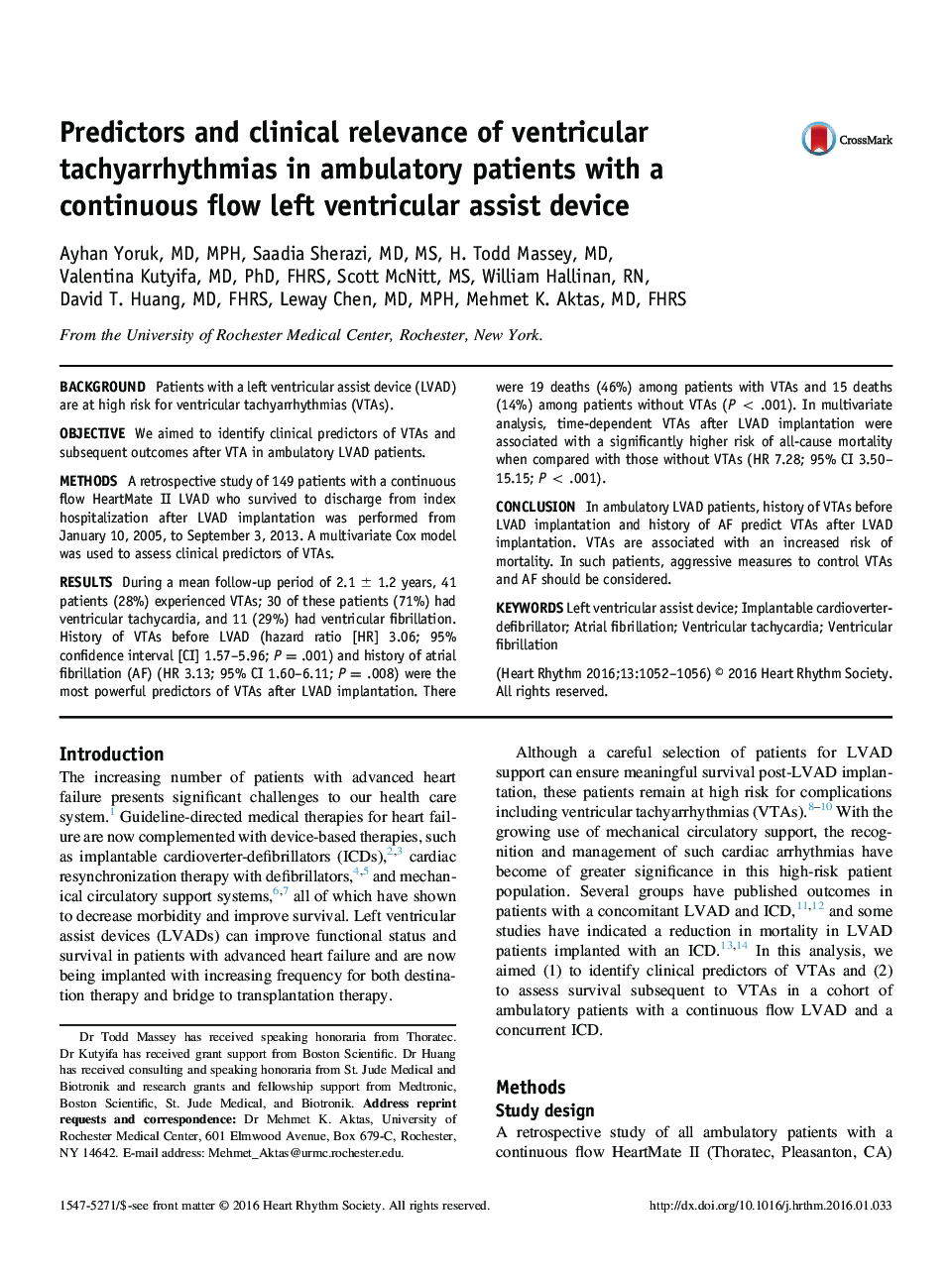| Article ID | Journal | Published Year | Pages | File Type |
|---|---|---|---|---|
| 2921742 | Heart Rhythm | 2016 | 5 Pages |
BackgroundPatients with a left ventricular assist device (LVAD) are at high risk for ventricular tachyarrhythmias (VTAs).ObjectiveWe aimed to identify clinical predictors of VTAs and subsequent outcomes after VTA in ambulatory LVAD patients.MethodsA retrospective study of 149 patients with a continuous flow HeartMate II LVAD who survived to discharge from index hospitalization after LVAD implantation was performed from January 10, 2005, to September 3, 2013. A multivariate Cox model was used to assess clinical predictors of VTAs.ResultsDuring a mean follow-up period of 2.1 ± 1.2 years, 41 patients (28%) experienced VTAs; 30 of these patients (71%) had ventricular tachycardia, and 11 (29%) had ventricular fibrillation. History of VTAs before LVAD (hazard ratio [HR] 3.06; 95% confidence interval [CI] 1.57–5.96; P = .001) and history of atrial fibrillation (AF) (HR 3.13; 95% CI 1.60–6.11; P = .008) were the most powerful predictors of VTAs after LVAD implantation. There were 19 deaths (46%) among patients with VTAs and 15 deaths (14%) among patients without VTAs (P < .001). In multivariate analysis, time-dependent VTAs after LVAD implantation were associated with a significantly higher risk of all-cause mortality when compared with those without VTAs (HR 7.28; 95% CI 3.50–15.15; P < .001).ConclusionIn ambulatory LVAD patients, history of VTAs before LVAD implantation and history of AF predict VTAs after LVAD implantation. VTAs are associated with an increased risk of mortality. In such patients, aggressive measures to control VTAs and AF should be considered.
